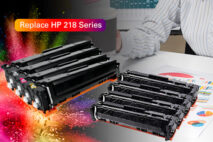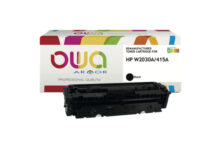 Of the handful of digital imaging OEMs that have committed to developing their own 3D printers, only one of them, HP Inc., has made a formal announcement of a product. Depending on how you look at it, this may or may not be surprising. On one hand, digital imaging OEMs seem well-positioned to make an impact in the 3D printer market with their manufacturing capabilities, channels, and engineering prowess. On the other hand, the 3D printer market is a fragmented, over-saturated mess with hundreds of vendors desperately trying to establish themselves as the market emerges. That means pressure on pricing and margins.
Of the handful of digital imaging OEMs that have committed to developing their own 3D printers, only one of them, HP Inc., has made a formal announcement of a product. Depending on how you look at it, this may or may not be surprising. On one hand, digital imaging OEMs seem well-positioned to make an impact in the 3D printer market with their manufacturing capabilities, channels, and engineering prowess. On the other hand, the 3D printer market is a fragmented, over-saturated mess with hundreds of vendors desperately trying to establish themselves as the market emerges. That means pressure on pricing and margins.
Digital imaging OEMs, including HP, are taking the latter view and subsequently a cautious approach with vague commitments to the market. Two OEMs—Epson and Mimaki—have stated an intent to enter the 3D printer market at some point in the future. Canon has demonstrated its own 3D printer but has released few details and made no commitment to producing it. HP will begin selling its Jet Fusion printer later this year.
Samsung seemed to commit to the market last February, only to back out later. The company announced that it was creating an “innovation team” to research new technologies, including 3D printing. Then in December 2015, Samsung said that 3D printing would not be profitable in the short term, and it would consequently shift its focus to the Internet of Things and drones. Samsung provided us with this statement regarding its status in 3D printing:
“We are currently conducting independent research on 3D printing to advance our internal R&D testing facilities and capacity. We are not currently considering extending our business to the 3D printing market. It is true that the company does focus on developing new technology. However, the existing printing industry and 3D printing are fundamentally different fields. 3D printing is very different from our current printing solutions business in terms of technology and market strategy, and we currently do not have any plans to introduce 3D printers to our product line.”
Note that both Ricoh and Olivetti currently sell 3D printers in limited geographic regions under their own brands. Because these systems were developed with 3D printer OEM partners, we do not include them in our list of OEMs that have committed to 3D. While their approach suggests that both Ricoh and Olivetti will eventually develop their own 3D printers in-house, we believe their strategy falls somewhere between the OEMs listed here and OEMs such as Konica Minolta, who resell other 3D printer brands.
Canon Teases
Canon demonstrated its own proprietary 3D printer at its Canon Expo events last fall, providing no release date or final specifications. It is a large-format, resin-based system for use in rapid prototyping applications, but with output quality good enough for small production runs, according to Canon.
The OEM appears to be positioning the printer to meet a number of key demands for the manufacturing market, including material options, object durability, and faster print speed and post-processing. Canon is also claiming it will deliver these capabilities at a lower cost.
Canon claims that the printer uses a new 3D printing method that makes the system suitable for both rapid prototyping and rapid manufacturing—very similar to HP’s claims. It will be able to print objects in small lots using a wide range of materials.
The OEM also teased its “3D Integrated Software,” which is designed to link multiple scanners, 3D printers, and other devices to provide a more seamless manufacturing process. The company claims that the new software will allow Canon to support the workflow of both 3D printing input and output devices in a way that requires minimal technical skills from the users.
It is interesting that Canon also resells 3D Systems printers in Europe. This gives the company valuable experience selling 3D printers, but also sets up potential conflict should Canon introduce its own 3D printer (see “Canon and Konica Minolta Capitalize on 3D Printing with Their Sales Channels”).
HP First Out of the Gate
Among the leading digital imaging OEMs, HP is the 800-pound gorilla in terms of its potential impact on the 3D printer market. On October 29, 2014, HP announced its intent to launch what was then called the Multi Jet Fusion 3D printer, based on its PageWide inkjet technology, in the fall of 2016. HP finally announced two models of its Jet Fusion 3D printer at the Rapid conference in May with a strong statement of its intent in the market (see “HP Formally Announces Not One, but Two Jet Fusion 3D Printers”). “Our vision is to not only play in the $4 billion to $5 billion 3D printing market, but to drive the next industrial revolution that could realize a market of up to $12 trillion,” said Alex Monino, HP’s head of marketing and go-to market for 3D printing.
The Jet Fusion 3D 3200 and Jet Fusion 3D 4200 are targeted at an industrial/manufacturing market and are designed to produce prototypes or end-use parts. This puts it in competition with popular industrial systems such as the Projet line from 3D Systems and the Fortus line from Stratasys. Prices for the Jet Fusion 3D 3200 start at $130,000, but HP provided no pricing for the Jet Fusion 3D 4200 line. The entry point is very competitive with models available from other manufacturers.
The price is only for the core printer. HP also offers a processing station that helps make the printing process more efficient. The printer itself has a build unit where the actual printing takes place. That build unit is detachable and works with the processing station. The base price for the Jet Fusion 3D 3200 with a processing station is $155,000.
The Jet Fusion 3D 3200 is targeted at prototyping applications for companies looking for a scalable solution. The Jet Fusion 3D 4200 is more of a production machine. HP expects to start shipping the Jet Fusion 3D 4200 in October and is currently taking orders. The Jet Fusion 3D 3200 will follow next year. HP will offer a color-capable Jet Fusion printer in 2017 as well. The products will be sold and supported through channel partners.
At the core of the Jet Fusion line is a unique and proprietary 3D printing technology that incorporates elements of powder-based binder jetting. The Multi Jet Fusion process applies a fusing agent to the surface of the powder. It also applies a detailing agent that gives the material different properties. Energy is then applied to fuse the material and activate the secondary agent, and the process repeats. Unlike binder jetting, which essentially glues the powder, the Multi Jet Fusion process fuses the powder. It also fuses each layer of the material together. This process results in much greater strength compared to standard binder-jetting technology, according to HP.
HP uses its PageWide wide-format inkjet print head to apply the liquid agents. PageWide gives the Jet Fusion printer the ability to cover the entire build area in one pass. HP claims this helps give the printer up to a ten-fold increase in speed over other technologies, and allows it to produce an object at half the cost.
Only two material choices will be available when the Jet Fusion line launches: PA12 and PA11, which are nylon-based polymers.
Epson Commits, but Will Take Its Time
Epson has committed to entering the 3D printer market, but the company is taking a long view. Epson gave us this statement regarding its 3D printer plans:
“Epson’s goal is to create 3D printers that can help to revolutionize the production site—creating parts using metals, plastics, and other materials with micron accuracy. Epson is aiming to have a commercial 3D printer on the market in five years, and a full lineup within ten.”
Epson’s intent to build production-capable systems matches HP’s. Also like HP, Epson sees this as a long process because it needs to develop a complete printer line with adequate materials support.
Mimaki Dreams in Color
Mimaki is well-established in the wide-format specialty 2D printer market and has stated its intent to offer a 3D printer. At the company’s anniversary event last year, Mimaki President Hisayuki Kobayashi announced that the company was working on a full-color 3D printer capable of printing in up to 10 million colors. The printer will use four-color UV-curable inks. Mr. Kobayashi made the following comments regarding the printer at the event:
“We want to understand the demands of the market. We don’t just need the printer, we need to develop software, too. We need to collect information to build the know-how to develop it. We haven’t decided on the application yet. At this stage we’re focusing on developing a full-color 3D printer. There is a big market. One application is architectural models or medical models, such as a full-color heart. We think we can do that within two years.”
Currently, Mimaki sells a printer, the UJF-3042, that can print in color on the surface of 3D objects. Presumably, the 3D printer under development builds on this technology. Mr. Kobayashi’s comments suggest that Mimaki will look at markets that do not necessarily overlap with its current wide-format customer base.
Our Take
Clearly, HP is the farthest along with its 3D printer plans, but the company has been careful to throttle expectations. The lead HP has over its digital imaging rivals may not be as big as it seems for three key reasons.
First, a few models cannot adequately cover the 3D printer market, even if the focus is on just manufacturing and prototyping. HP has said as much, and at least Epson seems to understand it as well. Each digital imaging OEM will need to develop a product line that covers a range of price points, capabilities, and performance. They will also need more than one technology in order to cover every industrial need.
Second, materials are a key driver for success. It doesn’t matter how fast or advanced your printer is if your customers can build objects with the materials they want. HP currently offers just two materials options. More will come, but materials development will require time, research, and the right partners.
Finally, 3D printing does not slide seamlessly into the digital imaging sales channels. 3D printing requires a different approach to sales and support, and many existing digital imaging channel partners aren’t equipped for it.
HP has said that 2017 will be a year to listen to and learn about the 3D printer market. Epson seems to prefer to slowly develop a product while watching the market from the sidelines. Canon appears to be hedging its bets by teasing the market with its own product while reselling 3D Systems printers. Like the other OEMs mentioned here, Mimaki sees the best opportunity in manufacturing and prototyping, but our best guess is that the company will seek out niches where it can leverage its technology.
The key takeaway here is that digital imaging OEMs will be a significant force in 3D printing, but they will get there in small, cautious, incremental steps. Risk is one reason for the slow pace, but the system and materials-development demands really give them no other choice but to go slow.




